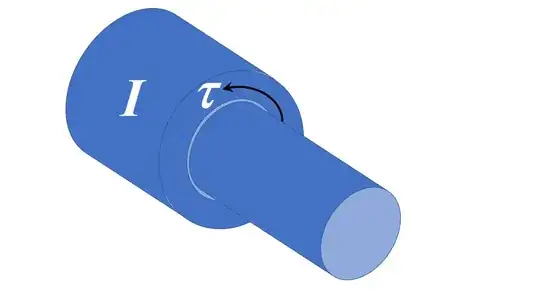tl;dr
If one has an angular accelerometer, what is the motion that it actually measures?
If we have a perfect (i.e. noise-free, error-free, perfectly aligned, ...) 3-axis angular accelerometer, given appropriate initial conditions, how does one obtain a SO(3) rotation from the (double) integration of said measurements?
Background and Details
If one were to open practically any inertial navigation textbook, it will describe an angular rate sensor as measuring ${\omega}_{ib}^{b}$ - that is, the angular rate of the the body with respect to the inertial frame, resolved in the body frame axes.
One may obtain a SO(3) rotation matrix from said gyro measurements using well-known differential equation:
$\mathbf{\dot{R} }_b^i = \mathbf{R}_b^i [{\omega}_{ib}^{b}]_\times$
where $\mathbf{R}_b^i$ is the rotation from the body frame to the inertial frame and $[{\omega}_{ib}^{b}]_\times$ is a skew-symmetric matrix constructed from the gyro measurements. The differential equation has a well-known solution for constant angular rate over a sampling interval:
$\mathbf{R}_{b(k+1)}^i = \mathbf{R}_{b(k)}^i \operatorname{expm}(\Delta t [{\omega}_{ib}^{b}]_\times)$
Using similar notation, what would be the quantity that an angular accelerometer measures (e.g. example device)? How do such measurements relate to angular rate measurements? How would one solve this (presumably) differential equation to obtain angular rate and a rotation matrix?
Please note this isn't meant to be a discussion on the practicality of such a solution - the issues are well-known (e.g. see p38 of Lawrence).
(Note to moderators: angular-acceleration would be an ideal tag for the question, but unfortunately no such tag exists)
